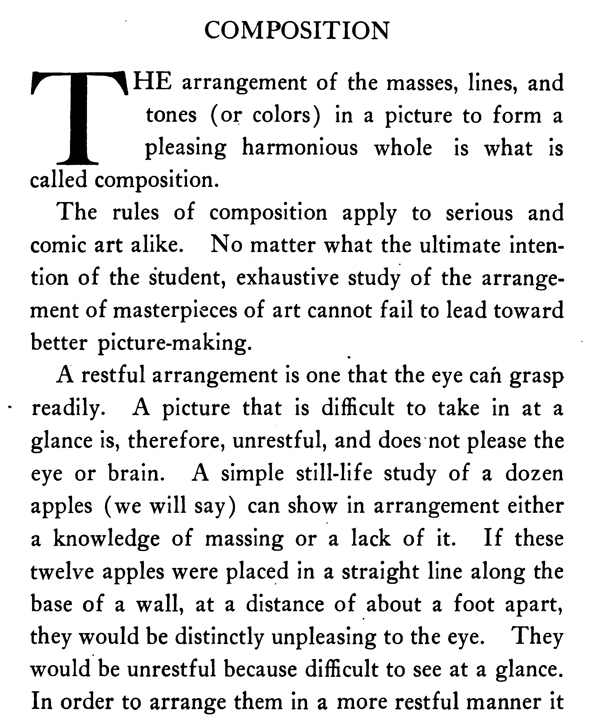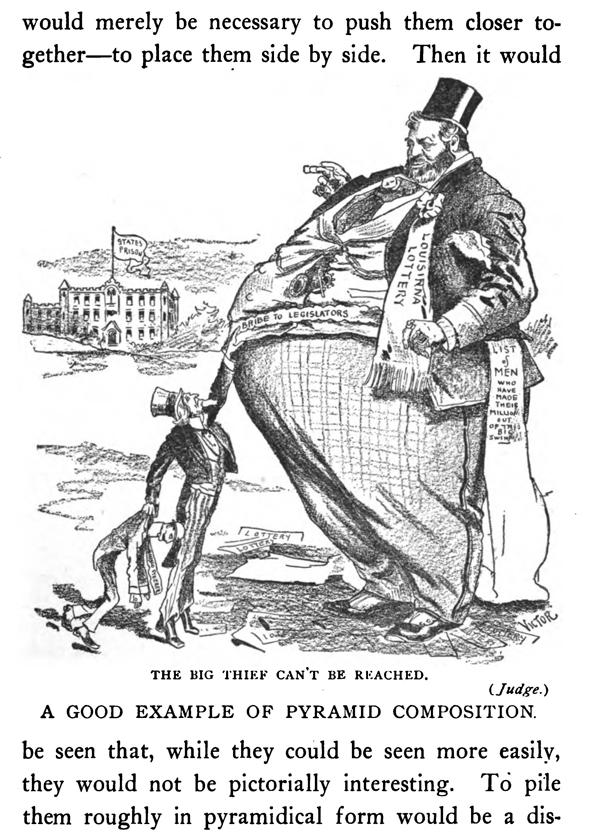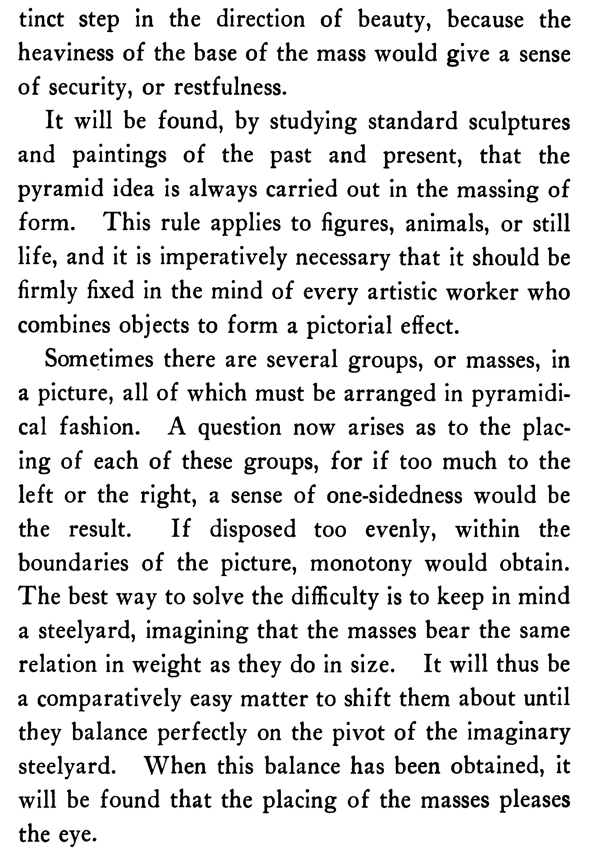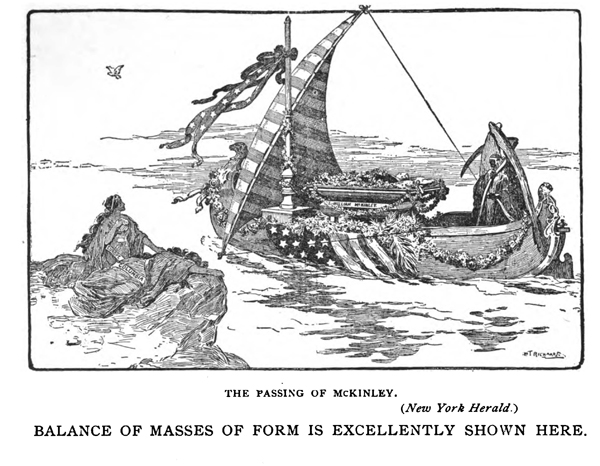Home > Directory Home > Drawing Lessons > How to Draw Caricatures & Cartoon Faces >Rules of Composition and Using Balance in the Proper Format
RULES OF BALANCE AND COMPOSITION FOR DRAWING CARICATURES AND COMICS
|
GO BACK TO THE HOME PAGE FOR CARICATURE DRAWING TUTORIALS
[The above words are pictures of text, below is the actual text if you need to copy a paragraph or two]
RULES OF COMPOSITION AND BALANCE
The arrangement of the masses, lines, and tones (or colors) in a picture to form a pleasing harmonious whole is what is called composition.
The rules of composition apply to serious and comic art alike. No matter what the ultimate intention of the student, exhaustive study of the arrangement of masterpieces of art cannot fail to lead toward better picture-making.
A restful arrangement is one that the eye can grasp readily. A picture that is difficult to take in at a glance is, therefore, unrestful, and does not please the eye or brain. A simple still-life study of a dozen apples (we will say) can show in arrangement either a knowledge of massing or a lack of it. If these twelve apples were placed in a straight line along the base of a wall, at a distance of about a foot apart, they would be distinctly unpleasing to the eye. They would be unrestful because difficult to see at a glance. In order to arrange them in a more restful manner it would merely be necessary to push them closer together—to place them side by side. Then it would be seen that, while they could be seen more easily, they would not be pictorially interesting. To pile them roughly in pyramidical form would be a distinct step in the direction of beauty, because the heaviness of the base of the mass would give a sense of security, or restfulness.
A GOOD EXAMPLE OF PYRAMID COMPOSITION.
It will be found, by studying standard sculptures and paintings of the past and present, that the pyramid idea is always carried out in the massing of form. This rule applies to figures, animals, or still life, and it is imperatively necessary that it should be firmly fixed in the mind of every artistic worker who combines objects to form a pictorial effect.
Sometimes there are several groups, or masses, in a picture, all of which must be arranged in pyramidical fashion. A question now arises as to the placing of each of these groups, for if too much to the left or the right, a sense of one-sidedness would be the result. If disposed too evenly, within the boundaries of the picture, monotony would obtain. The best way to solve the difficulty is to keep in mind a steelyard, imagining that the masses bear the same relation in weight as they do in size. It will thus be a comparatively easy matter to shift them about until they balance perfectly on the pivot of the imaginary steelyard. When this balance has been obtained, it will be found that the placing of the masses pleases the eye.
Privacy Policy .... Contact Us








